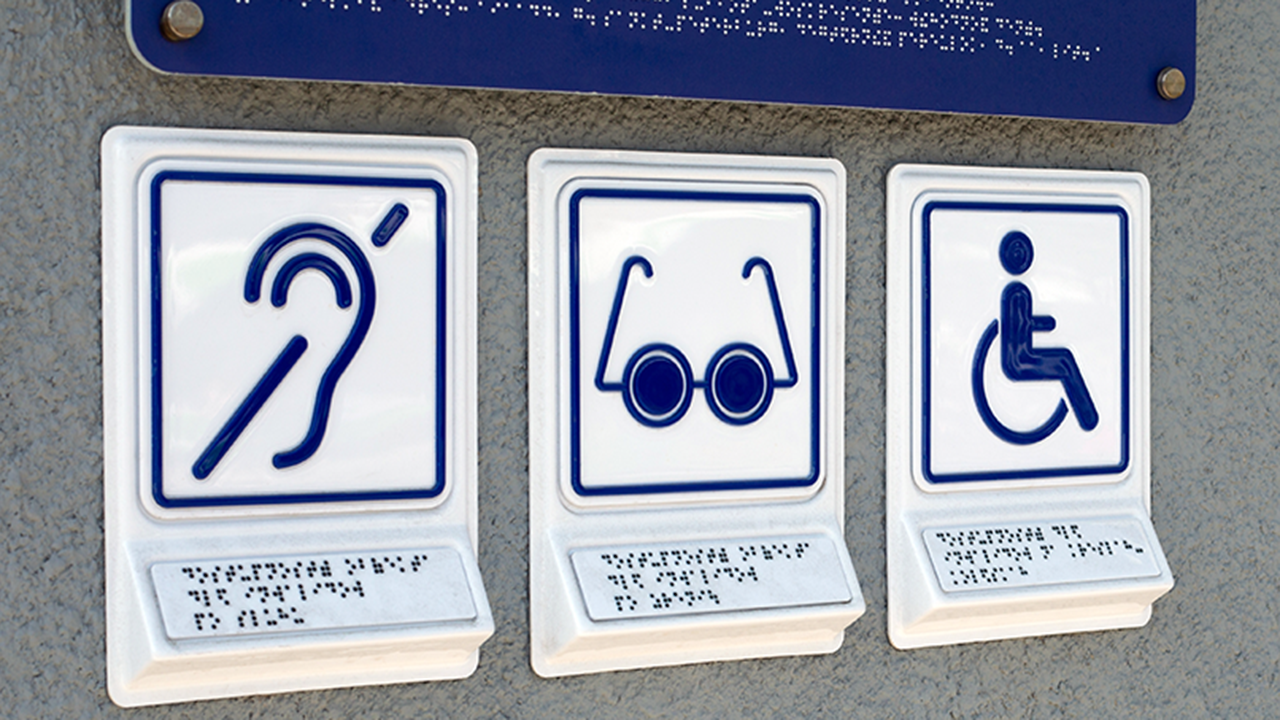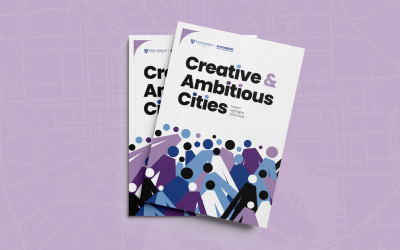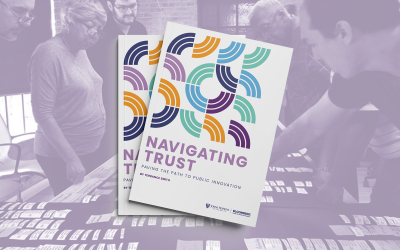As innovators, we face a pressing challenge: the need to design cities that embrace and support everyone – including those who live with a disability. Of the 1.3 billion people globally who live with a disability, more than 700 million of them navigate life in cities and represent a substantive demand for both design or infrastructure to support human rights through how we grow and serve urban environments. It’s also an economic opportunity issue: the systemic marginalization of people with disabilities has staggering economic consequences, with an estimated $2-8 trillion in economic potential lost by excluding persons with disabilities from employment.
But the situation can be transformed. Accessibility and inclusion aren’t just about accommodating specific needs, but about reshaping our mindset. Consider this mindset shift: a disability is not a medical condition. Rather, it’s the result of a mismatch between a person and their environment. By intentionally solving for these mismatches, we can extend benefits to many, unlocking new capabilities and perspectives that drive innovation, represent all, and respond to the diverse needs of every community member.
Building a world where inclusion is embedded into every stage of design, policy, implementation, and evaluation is the way we as civic leaders and public innovators can unleash the potential of all individuals and move the world toward a future in which no one is left behind.
Today, despite increasing awareness of accessibility needs, cities often overlook critical areas where inclusion can make a transformative difference. Here are five common accessibility gaps in cities and urban environments that civic leaders can focus on addressing when pursuing the radical accessibility and innovation needed for residents to thrive.
Technology Procurement and Integration Standards
The technologies cities use for planning, operations, and public services often lack sufficient regard for accessibility standards. Digital platforms, event management tools, and even procurement processes regularly fail to consider the needs of individuals who rely on assistive technologies. Ensuring that cities procure and implement technology compatible with a wide range of assistive tools is essential for preventing the exclusion of individuals with disabilities, particularly those with visual or mobility impairments.
Inclusive Data Collection Practices
Disability-inclusive data collection is critical to creating policies and services that genuinely reflect community needs. Traditional data-gathering methods frequently fail to account for the specific challenges and experiences of people with disabilities, leading to solutions that miss the mark. By explicitly incorporating disability perspectives into data collection, cities can develop more evidence-based, inclusive policies that better serve all residents.
Enhancing Monitoring and Evaluation
Current monitoring and evaluation frameworks often overlook the necessity of inclusively designed assessment mechanisms. Without inclusive monitoring, cities can miss out on real-time feedback from the populations they aim to serve, particularly those with disabilities. Continuous assessment is crucial for ensuring that programs and services remain relevant and effective in addressing accessibility challenges.
Addressing ‘Invisible’ Accessibility Needs
Many urban accessibility strategies focus on physical barriers but often ignore ‘invisible’ accessibility needs. People with sensory impairments, neurodiverse individuals, and others with non-apparent disabilities face unique challenges that require special accommodations. Providing sensory-friendly environments, offering quiet rooms, and delivering clear, detailed pre-event information are just a few ways cities can improve inclusion for these often-overlooked groups.
Cognitive Accessibility in Public Spaces
Public spaces often do not account for cognitive accessibility. Clear signage, easy-to-navigate layouts, and straightforward communication materials are crucial for individuals with cognitive disabilities and older adults. Cognitive accessibility ensures that everyone can engage fully in civic life, contributing to more inclusive, accessible communities and cities.
Cities that fail to prioritize accessibility miss out on an incredible opportunity to unleash the potential of all residents. Radical inclusion is not a nice-to-have; it is fundamental to creating equitable, vibrant cities where everyone has the opportunity to thrive. By integrating accessibility into every stage of design, policy-making, implementation, and evaluation, we can build communities that are innovative, inclusive, and responsive to the needs of all people. In doing so, we create cities that not only serve but also empower every individual, transforming barriers into opportunities and unlocking the shared innovation that comes from embracing diverse perspectives.
###
Dr. Victor Santiago Pineda is a globally recognized human rights expert, investor, philanthropist, and social impact entrepreneur. He is a two time presidential appointee, founder of The Victor Pineda Foundation / World ENABLED, CEO of The Center for Independent Living, and the film production company Windmills & Giants. Learn more about Dr. Victor Pineda.
This article was adapted from a presentation Dr. Pineda delivered to public innovators convened by the Bloomberg Center for Public Innovation at Johns Hopkins University. The Center’s Public Innovators Network welcomes local government leaders and staff who are committed to using innovation, data, collaboration, and resident engagement to deliver exceptional results for people. It is the premier place to learn from one another and access cutting-edge resources and support from Bloomberg Philanthropies through world-class opportunities. Apply to join the Public Innovators Network today.




